Bear Creek Bridge, Warwick Village
The Village of Warwick
Permanent European settlement in Warwick Township began in the early to mid 19th century as settlers began to access the area vis Egremont Road. Population soared and Warwick was known as the most important point between London and Sarnia. However due to the opening to the Great Western Railway a few kilometers south near Watford, the well-travelled route slowed and growth of Warwick Village halted.
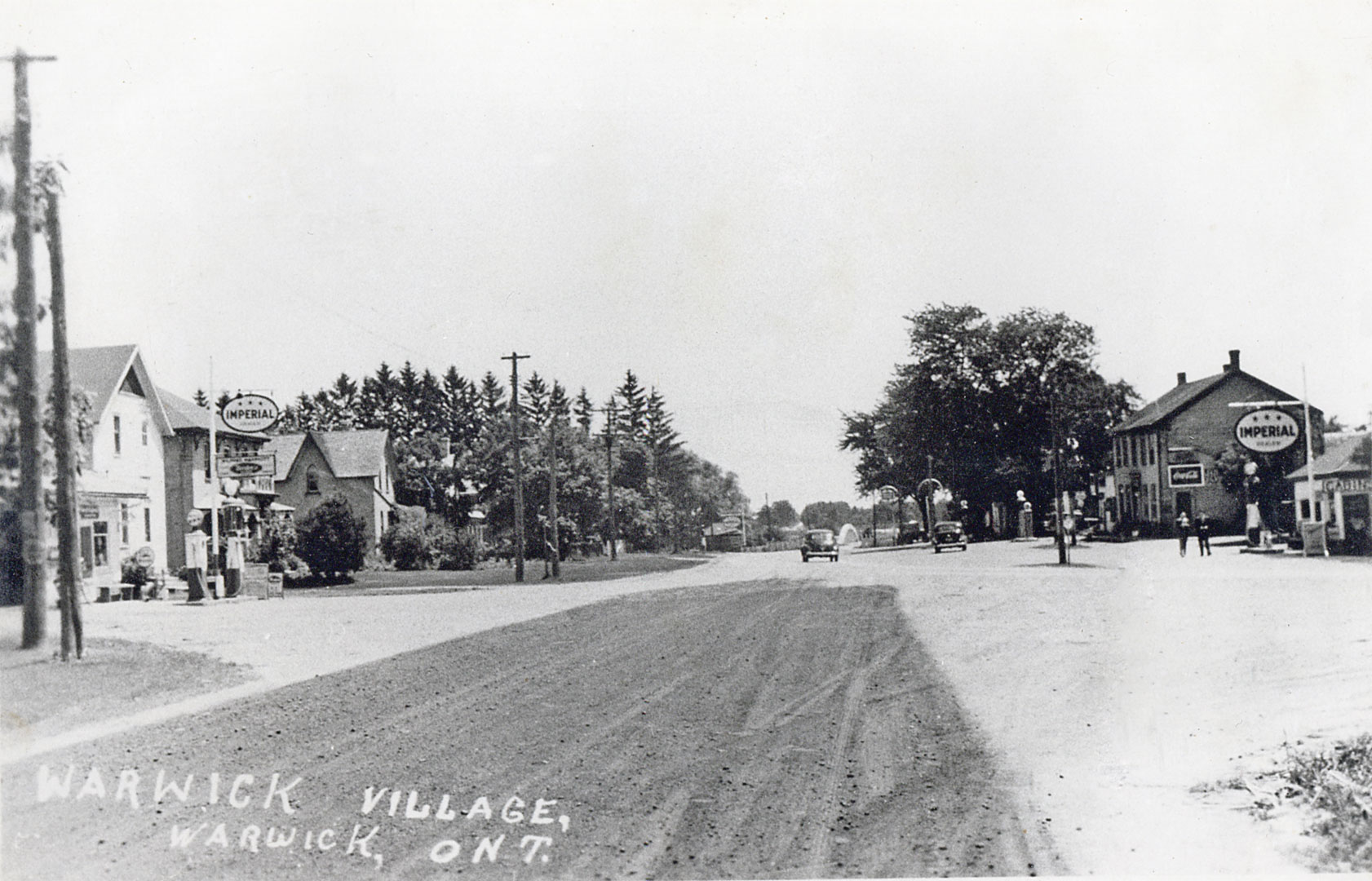
Bear Creek Bridge
The Bear Creek Bridge is located in the rural community of Warwick on the northeast corner of town limits. It is comprised of County Road 22 which extends in a east/west orientation from London to Sarnia with and average of 1600 vehicles crossing the Bear Creek Bridge Daily.
The first bridge crossing Bear Creek was built sometime in the mid to late 1800's using materials ready at hand such as timber and plank. Unfortunately construction details on this bridge are limited.
After repairs to the bridge made in 1899 started deteriorating, Mr. Nichol of Parkhill was contracted to replace the timber and plank bridge in 1903. Historic accounts in the Watford Guide Advocate suggest the bridge was also made of timber.
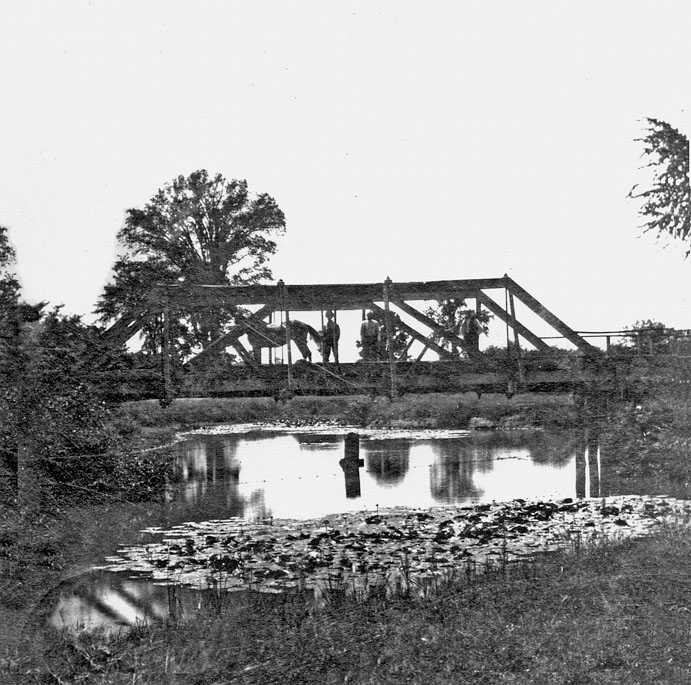
In 1913 the bridge was replaced again with steel truss bridge by Petrolia Bridge Works. Trussed steel arches were used on both sides of the new bridge using heavy steel I beams to support the concrete deck. However with increased traffic and the designation of Egremont Road as Highway 7, the bridge was replaced again within 20 years.
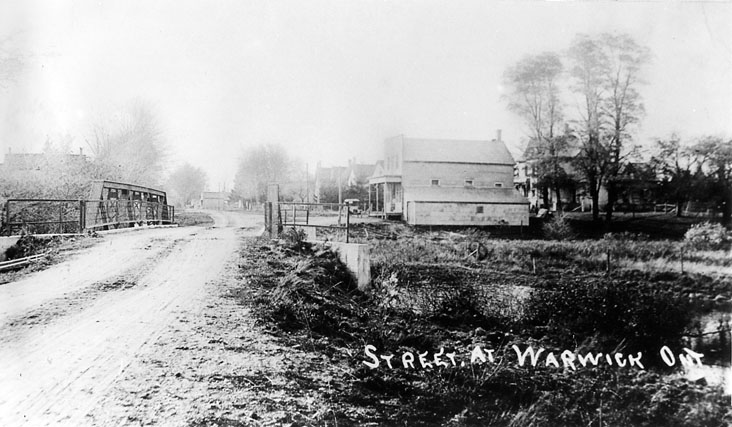
By 1931, the automobile replaced the horse and buggy as the primary transportation source and the increase in weight caused rapid deterioration of the bridge. The Canada Paving Company were contracted to create the replacement that used the existing bowstring arch design.
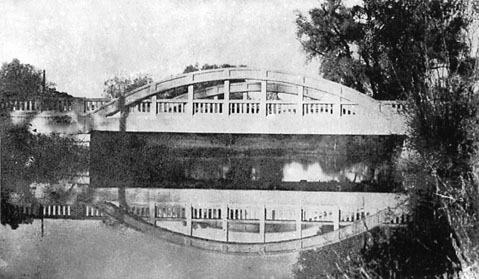
A construction mishap while building the auxillery bridge caused a heavy crane to drop through the bridge and straight into the ground below. This is summarized by the supervisor in a poem published in the Watford Guide Advocate.
Egremont Road
Egremont Road was one of the earliest roads constructed in Lambton County. It was originally envisioned as a military road by Sir John Colborne at the encouragement of Colonel Talbot. Much like most of the other early roads in the mid 1800's, it was of poor condition and mostly covered with stumps from trees that were cleared to make room for the road. Eventually gravel was hauled in by farmers to grade the road while ditches were dug to improve drainage.
Following the rise of motor vehicle usage in the 20th century, provincial highway construction greatly improves the road quality. In 1920, Egremont Road became designated as part of Highway 7. It remained under provincial ownership until 1997-98 when portions of the highway were downloaded to their respective municipalities, including the County of Lambton, and the road became known as County Road 22.
Bowstring Bridge Design
Bowstring Bridges were a short lived style of bridge construction use din the early to mid 20th century in Ontario. Although you can find examples of this style across the province, it was primarily used in Waterloo and Wellington counties. To spot the bowstring arch design it must include:
- Symmetrical arches on both sides of the structure
- Aesthetic concrete panelling set in arch
- Vertical posts under the arch
- Cantilevered concrete sidewalk
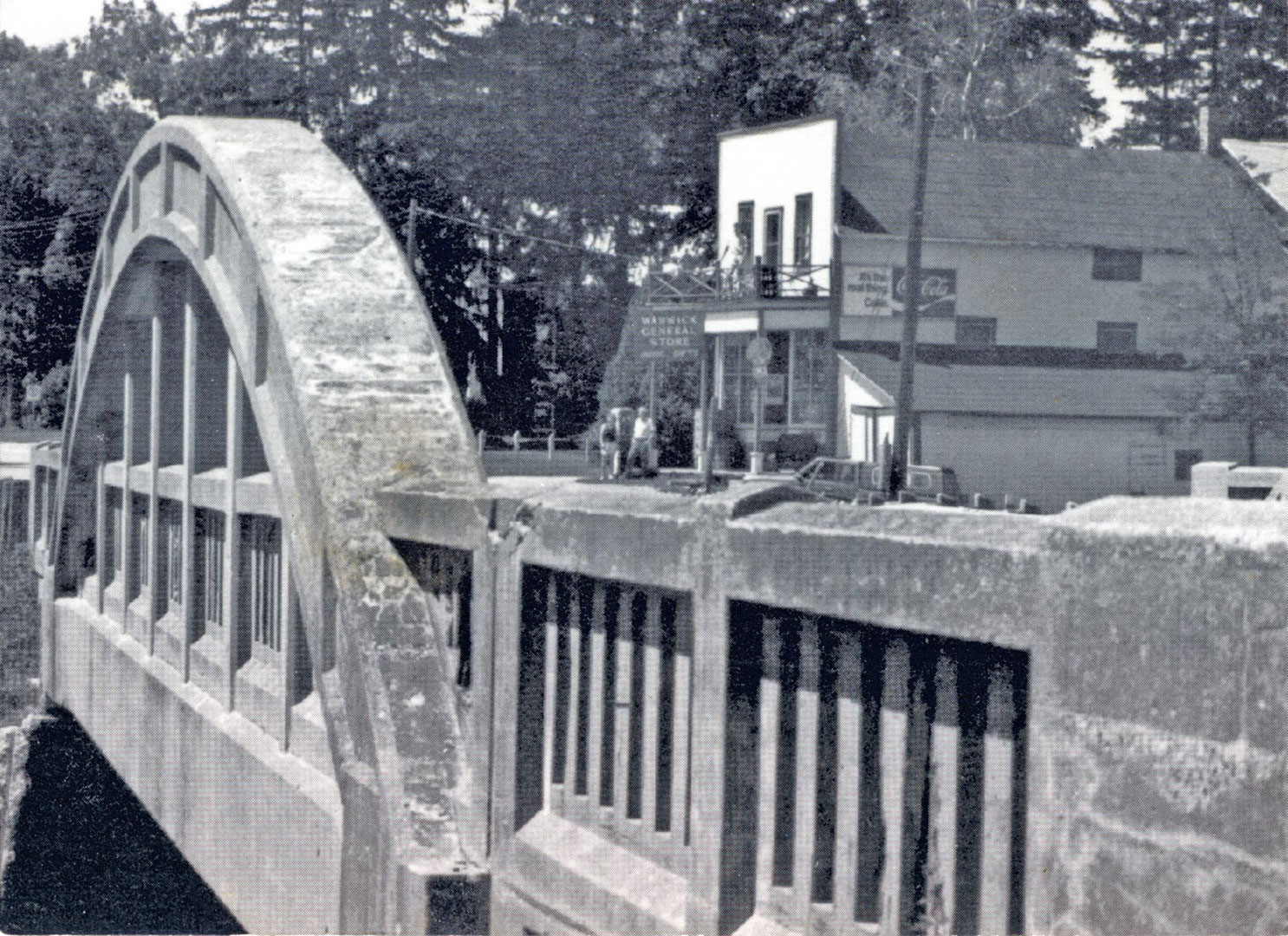

 Subscribe to this page
Subscribe to this page